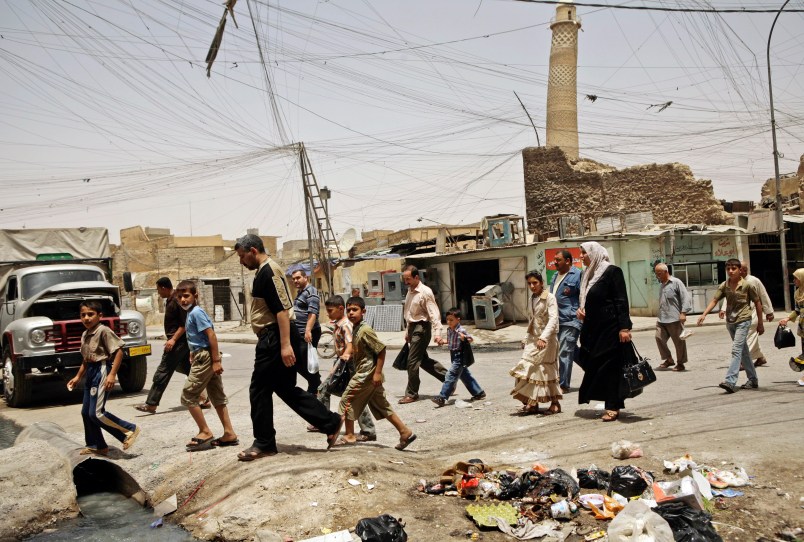After rolling over the Iraqi National Army in much of the Sunni heartland of Iraq, ISIS has now made significant territorial gains in Iraqi Kurdistan. This isn’t just bad news for the US inasmuch as the Iraqi Kurds have been close to the United States. It also suggests some major misreadings (perhaps more than one or two) of key elements of what is happening in what we might now call the former Iraq.
Most accounts of ISIS’s roll over the Iraqi Army stressed two basic factors. 1) at least passive sympathies from Iraqi Sunnis who felt marginalized and even brutalized by the government in Baghdad and, 2) abysmal morale and cohesion in the Iraqi National Army which led it to collapse in the face of a committed if numerically small adversary. That storyline fits pretty neatly with much of what has happened over last decade in Iraq, a restive Sunni minority estranged from and sometimes at war with the central government, and brittle, perhaps artificial national institutions.
But for years we’ve been told that the Peshmerga, the de facto army of the Kurdish Regional Government, was a highly disciplined and fairly fearsome fighting force. Perhaps not sporting the most advanced weaponry but not the kind of force that would melt away like the Iraqi Army, especially because they’re fighting on and for what they regard as their national homeland.
So what’s happened to ISIS, which was supposed to be a fairly small, rag tag force, highly spirited perhaps but not a force capable of making gains against a disciplined regular army? Quite a bit of American weaponry did fall into ISIS hands when the Iraqi Army fled. But advanced weaponry usually requires significant training to use effectively or at all and additional time to integrate its use into a fighting force. It seems highly questionable that all that weaponry could have transformed ISIS’s capabilities so quickly.
And if ISIS hasn’t changed, is it possible that the Peshmerga were never really the vaunted force they were made out to be? That’s the question asked by this editorial in a Saudi paper. Whether it’s one of these misapprehensions or the other or both, either would seriously change the situation in Iraq from what we’d been led to believe as recently as a few days ago.
Now, these may all sound like rhetorical questions. But they’re not. Not only am I no expert on these issues I’ve been first busy and then under the weather for the last week. So I’ve missed a lot of the details of what’s happened during this new round of ISIS advances. What I do feel relatively confident saying is that if what we’d been led to believe about ISIS and the Peshmerga were true, what appears to be happening now would not be happening. So what has changed or what were the experts wrong about?
I know many of you have fairly detailed knowledge of various aspects of what’s happening. So I’m eager to hear your thoughts.






